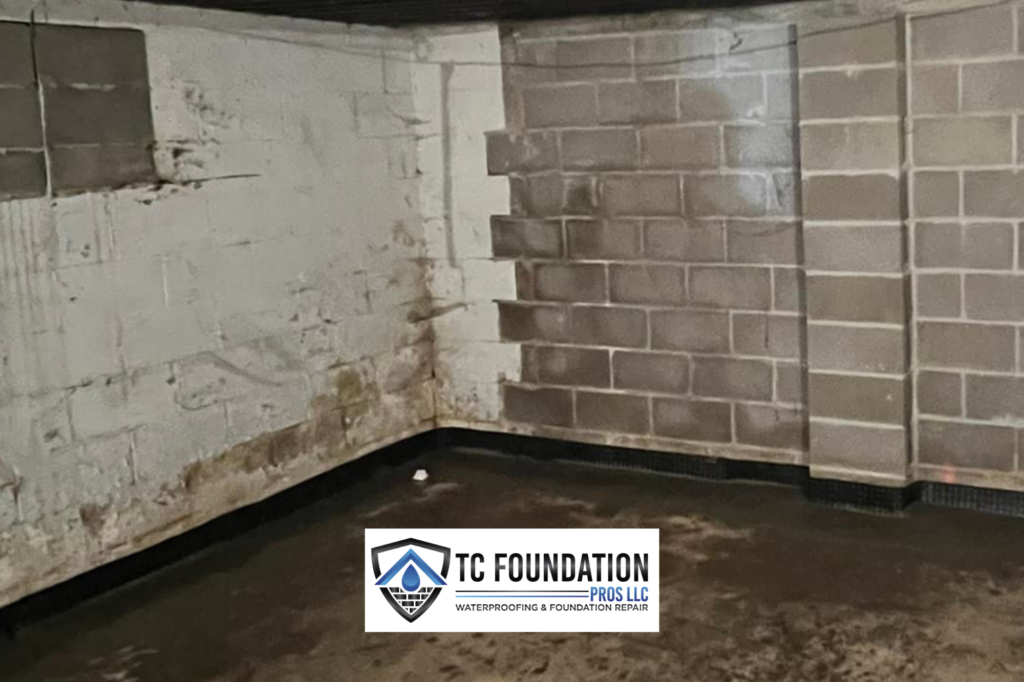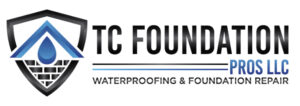If you’ve detected a musty smell in your crawl space, you’re likely facing moisture and mold issues. You need swift action to maintain a healthy home environment and prevent potential damage. Start by identifying signs of mold, such as dark patches or a persistent musty scent. Improve ventilation in the crawl space area, ensuring vents are unobstructed to aid air circulation. Incorporate a moisture barrier suitably sealed around edges to detain dampness. With existing mold, applying mold-killing solutions and conducting regular inspections helps safeguard against recurrence. Explore more for a thorough guide on tackling moisture and mold problems effectively.
Key Takeaways
- Identify moisture problems in your crawl space, checking for damp insulation, standing water, or musty odors.
- Understand the severity of the mold issue by observing visible signs like dark patches and persistent smells.
- Enhance ventilation in the crawl space by ensuring vents are unobstructed and installing a fan if necessary.
- Install a moisture barrier, such as a thick polyethylene sheet, ensuring it’s properly sealed around edges and overlaps.
- Implement mold remediation techniques, including using mold-killing solutions and addressing underlying moisture issues to prevent recurrence.
Identifying Moisture Issues
While it may not be the most glamorous part of homeownership, identifying moisture issues in your crawl space is essential to maintaining a healthy and safe home environment.
Crawl space moisture problems can lead to a host of complications, from structural damage to health hazards like mold growth.
Start by conducting a thorough inspection of your crawl space. Look for standing water, damp insulation, and condensation on your crawl space walls or subfloor.
These are all signs of excessive moisture. Additionally, take note of any musty odors. This could be an early indication of mold growth, a common consequence of untreated moisture problems.
Identifying signs of mold in your crawl space is critical. Visible mold, water stains on walls, or a persistent musty smell all signify potential mold issues.
Remember, mold thrives in damp, dark environments – exactly the conditions offered by a moisture-ridden crawl space.
Addressing these issues promptly can prevent further damage and promote a healthier living environment.
In the next section, we’ll explore deeper into understanding and dealing with mold problems.
Understanding the Mold Problem
After thoroughly inspecting your crawl space for signs of moisture, your attention must now shift to the mold problem that often accompanies damp conditions.
Mold thrives in moist environments, and a damp crawl space provides the perfect breeding ground for it.
Understanding the mold problem is essential because it can lead to serious health issues and structural damage. The most visible signs of mold in a crawl space are usually dark, fuzzy patches on surfaces, but the infestation might also give off a musty smell before it’s visible.
Mold is more than just a cosmetic issue. If left untreated, it can damage the structural integrity of your house, leading to costly repairs. In addition, certain types of mold can cause health problems, ranging from allergies to respiratory infections.
Addressing crawl space moisture problems is the first step in preventing mold growth. By controlling the level of dampness in your crawl space, you cut off the mold’s water supply, making the environment less hospitable for mold growth.
It’s vital to maintaining a healthy, safe home. Remember, a dry crawl space is a mold-free crawl space.
Importance of Proper Ventilation
Proper ventilation in your crawl space is essential for managing moisture and preventing mold growth. It’s a vital factor in maintaining a healthy home environment, yet it’s often overlooked.
So, let’s explore some effective crawl space ventilation tips.
Firstly, you must understand the role of ventilation in your crawl space. It facilitates air circulation, which is important in reducing humidity levels. Without proper ventilation, moisture can build up, leading to crawl space moisture problems such as rotting wood, rusting metal, and worst of all, mold.
To improve ventilation, make sure that your crawl space vents are open and unobstructed. The rule of thumb is one square foot of ventilation for every 150 square feet of crawl space.
If necessary, consider installing a fan to aid in circulating air.

Choosing Moisture Barriers
Ever wondered how to effectively block moisture from seeping into your crawl space? Choosing the right moisture barrier is essential in solving crawl space moisture problems.
These barriers, often made from polyethylene, create a physical barrier between your crawl space and the damp earth around it.
You’ve got options when it comes to thickness, typically ranging from 6 to 20 mil. While a thicker barrier may be more durable, even a six-mil
vapor barrier can do the job if installed correctly.
Make sure it’s well sealed around the edges and overlaps to provide complete coverage.
Incorporating a moisture barrier is a proactive way to prevent mold in your crawl space. It reduces humidity levels, making the environment less conducive to mold growth.
Effective Mold Remediation Techniques
While installing a moisture barrier can help prevent mold growth, it’s crucial to address any existing mold in your crawl space. Ignoring signs of mold in crawl spaces can lead to severe structural and health issues.
Effective mold removal is necessary to ensure it won’t return. One effective technique is using mold-killing solutions. But remember, some molds are hazardous to deal with. If you’re unsure or the infestation is extensive, consider hiring a professional.
In Pittsburgh PA crawl space repair services specialize in mold remediation. These professionals use advanced techniques, including HEPA vacuuming and anti-microbial treatments, to remove and prevent mold. They’re equipped to handle mold safely, ensuring it doesn’t spread throughout your home during the remediation process.
It’s also critical to address the moisture issue that caused the mold. This might involve fixing leaks, improving ventilation, or encapsulating the crawl space.
Maintaining a Dry Crawl Space
Although maintaining a dry crawl space may seem challenging, it’s essential for preventing moisture and mold issues. When your crawl space is constantly damp, it becomes a breeding ground for mold, which can lead to structural damage and health problems.
Firstly, you need to identify the source of the moisture. It might be due to poor drainage, a plumbing leak, or even inadequate ventilation. Once you’ve identified it, take immediate steps to rectify the issue. If it’s beyond your capabilities, don’t hesitate to call in professionals like crawl space repair services Pittsburgh.
Next, consider encapsulation. This process entails sealing your crawl space with a vapor barrier to keep out moisture. It’s a popular method for preventing mold in crawl spaces, as it creates a moisture-free environment that’s inhospitable to mold.
Lastly, monitor the humidity levels in your crawl space. To keep mold at bay, aim for a humidity level of less than 50%. A dehumidifier can be extremely useful for this purpose.
In Conclusion
So, you’ve got the tools to eliminate that musty smell for good! By tackling moisture issues, addressing mold, and improving ventilation, you’ll turn your crawl space from a problem area into a safe, dry space. Don’t forget the importance of moisture barriers and regular maintenance. Taking these steps promptly not only improves your home’s air quality but also prevents costly structural damage. For professional crawl space repair in Pittsburgh PA, trust TC Foundation Pros to help you say goodbye to that musty odor and hello to a healthier, fresher home!
